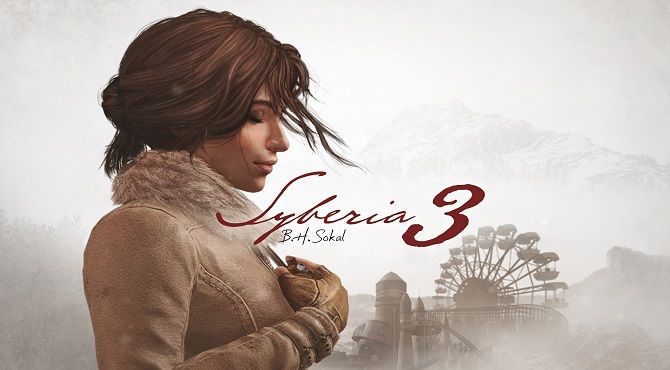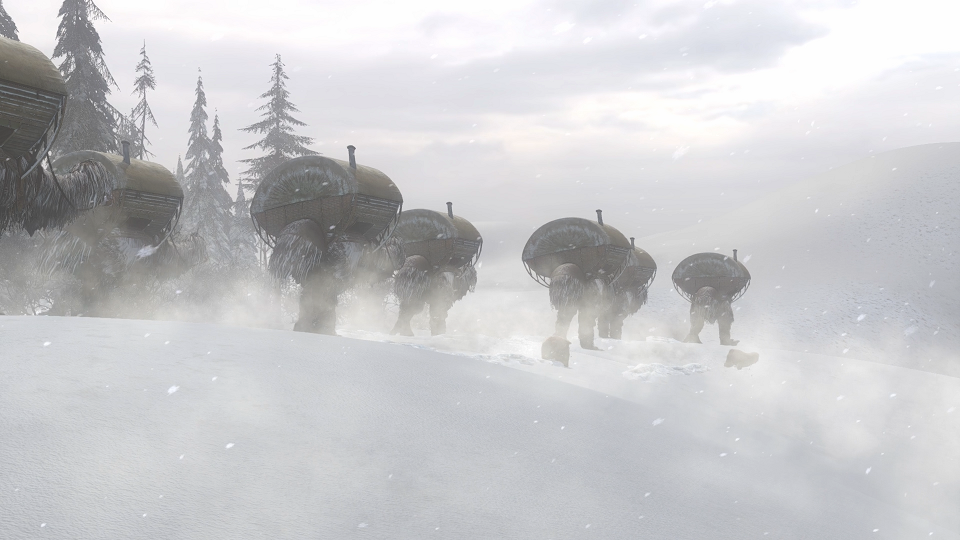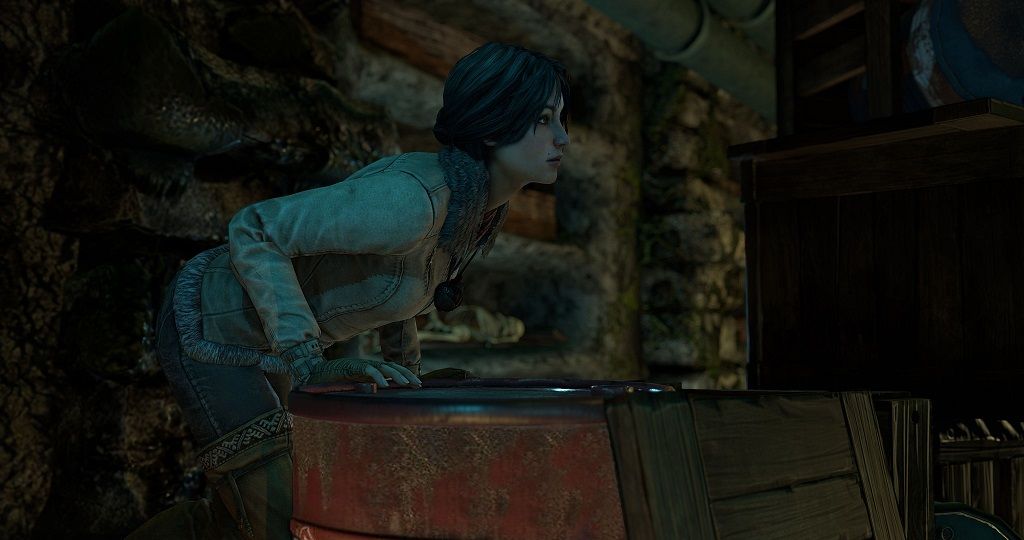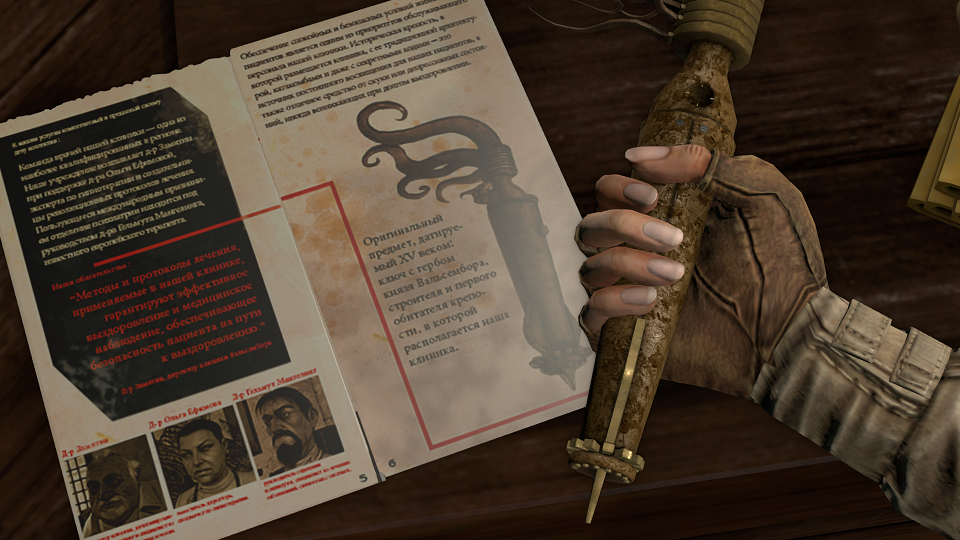During GDC, I was invited to Ubisoft’s San Francisco office to check out and try out Syberia 3. As an added bonus, series creator Benoit Sokal was there as was one of the lead designers, Lucas Lagravette. While the first part of my 40 minute preview was limited to a hands-off walkthrough, I was given a chance to play the game near the end of the meeting.
For those unaware, Syberia 3 is the latest installment in an award-winning, adventure game series that has been around since 2002. Developed by the French studio Microïds, the titles were phenomenally successful in Europe, especially on the PC. After 15 years, featured on multiple platforms including the Nintendo DS and PlayStation 3, the series is nearly ready to become a trilogy with the launch of the latest game.
You play as Kate Walker, a New York lawyer who has been sent to Europe to oversee the transference of an historical automaton factory. After some misadventures, you find yourself leaving your old life behind and seeking out woolly mammoths in the fictional country of Syberia. You meet eccentric inventors, a sarcastic robot companion named Oscar, and an indigenous tribe of short nomads known as the Youkol on your journeys through the first two games.
As Lucas fired up the PlayStation 4, he told me that we would be jumping around a bit in the game. For the hands-off portion, we went a few hours into the adventure. I was with the tribe of Youkols and their snow ostriches stuck underneath an irradiated city. Russia and Chernobyl are big inspirations for Syberia 3’s environments and automatons, which we'll see more of later.
In typical adventure game style, our path was blocked and we needed to certain inventory items to get past a swarm of bats guarding a dark tunnel. In the massive underground complex (maybe the remnants of a subway system) the short and round Youkols waited patiently with their winter ready birds. And while the indigenous tribe had their own wranglers and leaders, it was Kate Walker (controlled by Lucas) who had become the de facto explorer.
As my French guide wandered the tunnels, hotspots began to naturally pop-up while Lucas approached them. He explained that a lot of the interactions with characters and certain parts of the scenery were there for world building and not essential for a play through. For instance, in one sewer-like passage we were able to take a moment to just enjoy the environment by interacting with the hotspot. The cool aspect was that different actions are mapped to different buttons on the DualShock controller. That way you can see if a certain item of interest can be picked up or talked to or, in this case, just looked at. If you are hurrying along the story for whatever reason, this can give you a quick indication of what's important to move forward.
The camera system in the game is ‘mostly’ fixed in place. Lucas compared it to early Resident Evil games. However, you are able to move the boundaries of the screen with the analog stick to see more areas and details of the different environments. While this seemed to be more of a novelty with exploration, i found out later on that it was a necessity for some puzzles.
Speaking of the brain-teasers in Syberia 3, the dev team has added a few mechanics to update the classic point-and-click aspects of the original two games for a modern audience. Gone is the ability to try every inventory item on every last thing -- in its place is a more streamlined system.
There are spots that allow you to zoom in that generally act as the main hubs for puzzles. For instance, for the "bats obstacle," a nice Youkol gave us a stick that he suggested that we try and attack the flying rodents with. While this was met with Kate’s usual skepticism, it did give us a clue in what we really needed to do. In the main hall of the underground tunnels was a workbench. Here the Lucas zoomed in and started playing around with the items he currently had.
Rather than mixing things in the inventory screen, he was able to put the stick in a hole in the table and play with it that way. Here the game highlighted the items that could be combined to make the torch we needed. Lucas explained to me that the difficulty could be adjusted: the option we selected gave indicators and pop-up hints. These could be turned off to make the game more challenging. And he explained that you could mix and match settings (keeping the hints on for instance) to create your own preferred difficulty.
The real highlight of the hands-off section was after Lucas tried to scare away the bats with his makeshift torch. He explained that since this was an adventure game, solutions were generally never that easy. The bats flew off in the face of the fire but since the exit at the top of the tunnel was sealed, they had nowhere to escape to.
Thankfully, we weren't stuck underground the whole time...
Unfortunately the city above was no place for Kate and her vulnerable flesh and organs. Luckily the fan favorite automaton, Oscar, was there to help his friend out. At this point, and after some funny banter between the two, Lucas took control of the robot to explore the world above.
The roads and buildings were deserted with vegetation starting to retake the land. The brutalist architecture of Eastern European communism was on full display here and was beautiful through it’s ugliness. A few discarded automatons lay deactivated in the streets. Lucas explained that these were the robots that were sent out to find survivors after the fallout. They were forgotten about and left to rust by the government.
It was at this point that really saw the grandeur of the visual design and the subtlety of the environmental storytelling. The game runs on Unreal 4 and it looked quite polished. Lucas explained that this still wasn't the final product and there will be tweaks before the April release. The only thing that stuck out to me was the characters when they spoke. Words did not match up with the mouths and there was a weird uncanny valley vibe going on.
But when characters did speak, the English voice acting was pretty effective. The Youkols had a unique way of speaking and a lot of them had the same cadence while talking (and calling you ‘misskatewalker’ as one long name). Oscar and Kate were the highlights however with Sharon Mann reprising her role as the series protagonist for the third time.
Actually everything about our sidekick automaton was spot on. While gameplay doesn't change when you switch over to Oscar, small things do, giving him even more character. His walk cycle is quick and machine-like, with just enough awkward there to give him a human feel. Oscar can still look at hotspots the same way but making erroneous puzzle solutions gives responses such as, “Who do you think I am, Kate Walker?”
Unfortunately for me the playable part of the preview did not contain Oscar but it was interesting just the same. I was taken to the very beginning of the game and treated to a nice looking CG Intro with Kate being rescued from near death by the Youkol tribe as they continued their journey to the snow ostriches mating ground.
I woke up in a hospital room with a Youkol that was missing his leg in a bed beside me. The cinematic that played right before where I met my Nurse Ratched-like caregiver didn't make any attempts to hide her as a villain. Even the fact that my room companion was shackled to the bed gave me an indication that all was not right in this hospital.
The first room acted as a tutorial of sorts. There was a call button I needed to ring to try to tell the staff that I was awake. Of course it was broken and it took a mix of walking around and spoken guidance from the Youkol to figure out what to do. With a knife in hand I tackled the broken call box.
While Lucas said some puzzles would still be quite challenging, the team specifically made a point to make them more user friendly and less obtuse than your usual classic adventure game fair. The call box felt quite intuitive as I was able to use the knife as a screwdriver to open the thing up.
The movable camera came into play here as I could swoop around the device to look for more clues. On the side of the box, not visible from the default camera position, was instructions on how to make the button work from the inside. I referred back to this display a few times and the solution felt very natural. Granted this was the first puzzle of the game but it gave me hope for the rest of the adventure.
Once I got out of the room I understood the reality of the institution. This was more of a psychiatric hospital with patients suffering from a number of different and serious ailments. The fact that they were allowed to wander the grounds free left me questioning the effectiveness of the hospital administration.
Talking to the patients yielded creepy mutterings and vague clues. This was the only point where I felt a bit iffy about the actors behind hate characters. I didn't have a lot of time to look around the facility but the oppressive mood and nature of the building made me see the more darker themes of Syberia 3 hiding under the surface.
There were even some aspects that made me excited to play more. One section of the sprawling hospital contained a cage with a few automaton birds inside. Their Art Deco designs were beautiful but unfortunately I couldn't take a closer look because I didn't have the key. Obviously these feathered machines contained another puzzle that might be a bit more traditional; maybe you need to make the birds chirp out an auto-tuned melody.
However, I will unfortunately have to wait until the game is fully released to explore more. With the beautiful visuals, an updated inventory system, snappy characters, and a captivating setting (I really want to know more about both the Youkols and the automatons), Syberia 3 has moved even further up my need-to-play list.
Syberia 3 is set to release on PC, PlayStation 4, and Xbox One for $49.99 USD. It will come out in Europe on April 20th and the rest of the world on April 25th.




